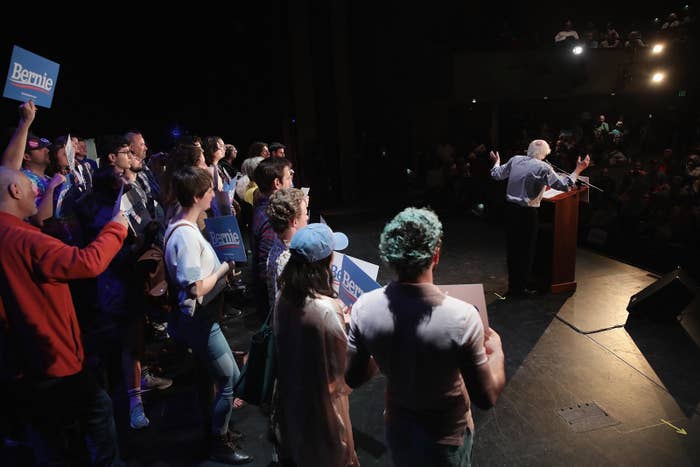
If you covered American politics between 1976 and 2012, you developed a sense of the rhythm of a party primary: A big field of candidates would rise and fall for months as voters — guided by the media — would light upon one, appreciate their strengths, and then discover their weaknesses and move on to the next one. You’d hear talk about the “flavor of the month” and who was “hot” this week. For a manic stretch of 2012, we all believed seriatim that Michele Bachmann, Rick Perry, and Herman Cain were the likeliest Republican nominee.
And if you were honest about it, you’d admit that the media itself drove much of this process. We got interested in a candidate and inflated their prominence, then challenged them more aggressively and dug hard into their record, then moved on to the next one. We, and the voters who cared what we thought, would sort of sip a candidacy, swirl it around our mouths, and spit it out. The candidate who got our collective attention in March 2003, almost by definition, would not be the nominee — at least, not without a dramatic collapse and rebirth. The candidate who won would be the one who built grassroots support in Iowa and New Hampshire, ignited it in December, and rode a triumphant narrative into quickly locking up the nomination. Those were the 10 presidential campaigns, give or take, dominated by what that era called the mainstream media.
And one of the reasons the political press got Donald Trump so wrong is that his campaign didn’t work like that. When we saw his early polls, we thought he was the flavor of the month. But he was the flavor of every month, of every day. His support grew and grew, and his supporters weren’t just trying the idea out: They cleaved to him more tightly. His support didn’t rise and fall. It snowballed.

There was a reason for that pattern: Trump’s supporters weren’t taking their cues from analysts, or taking much interest in the traditional vetting from the mainstream media; they were listening to the man himself, unfiltered on social media and cable news.
That pattern — the straight-up-and-to-the-right of A Star Is Born — isn’t how the old Establishment politics worked. But it seems to be a defining feature of the new movement politics. Alexandra Ocasio-Cortez’s trajectory inside her party has been stunningly free of setbacks. These new politics look less like old presidential campaigns than like social media fandoms: Beyoncé, Taylor Swift, Drake, and the Marvel Universe don’t come and go. They’re eternal, as long as their protagonists provide a steady stream of content and mutual affirmation to growing groups of supporters. This is a snowball, not a narrative.
So what does that mean for the 2020 Democratic primary?
Well, it could mean that the theory motivating most of the 20-plus candidates — that they should make their cases and wait for their turns in the sun of public attention — is just wrong. Under this theory, Cory Booker and Amy Klobuchar will never get their turns.
And the candidates who have found their social media and movement fandoms early — Bernie Sanders, who never let his go, and Pete Buttigieg, who caught the moment, are the obvious ones — will become harder and harder for the others to dislodge as they develop increasingly intense relationships with their core fans. There’s space for one or two more fandoms, and Elizabeth Warren and Kamala Harris seem closest to building them. And, perhaps, there’s enough space for a reaction against this new politics for Joe Biden.
Politics is the media business, and increasingly the media-criticism business. But spare a thought for the possibility that, as you judge the media’s coverage of the Democratic primary, we have a lot less to do with the outcome than we used to. The power that we used to wield has been handed over to the fandoms.
